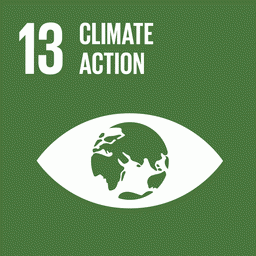by Karina Custódio*
Forests frequently affected by fire and drought lose their ability to remove carbon from the atmosphere and store it in the soil, according to a new study by IPAM (Amazon Environmental Research Institute), published today (10/03) in the scientific journal Forest Ecology and Management. The research is one of the first to investigate the relationship between fires and soil in the Amazon.
The results were achieved after a six-year investigation (between 2004 and 2010), carried out at the Tanguro Research Station, a space dedicated to scientific production located in the Amazon and maintained by IPAM and partners. Leonardo Maracahipes-Santos, coordinator of the Tanguro Research Station, IPAM researcher and one of the authors of the study, explains why these events can intensify climate change.
“These forests hit by fire and drought become increasingly degraded over time, mainly due to the reduction in the time interval between these extreme events, preventing them from recovering. This means that they lose their ability to store carbon in the soil and start using their energy reserves to withstand these extreme events and survive. As a consequence, the forest reduces its capacity to remove carbon from the atmosphere, exacerbating the climate emergency and threatening the forest’s ability to stay alive,” says Maracahipes-Santos.
The researcher points out that the exchange of carbon between the soil and the atmosphere was 18.7% lower in the forest studied that was hit by the fire. This occurred because the fire increased the mortality of trees and roots which, together with the stress caused by the drought, reduced the process of photosynthesis – responsible for capturing carbon from the air and transforming it into energy for the plant. The reduction in energy production capacity forces the forest to use old energy reserves, making it more vulnerable to future extreme events, which may become more frequent as the average global temperature rises.
Research Strategy
The researchers analyzed two parts of the Amazon rainforest: one frequently affected by experimental fire and the other preserved (control). Both experienced two episodes of extreme drought during the study. A range of data was collected, including root growth, carbon exchange between air and soil, and the age of the carbon in the energy reserves used by the trees.
Ebis Nascimento, IPAM research technician, collecting carbon exchange data in preserved forest at the Tanguro Research Station. Photo: Wanderley Rocha da Silva
The carbon exchange was measured using monthly EGM-4 records, a device that measures air circulation between the ground and the atmosphere.
The growth of fine roots was analyzed by installing pipes with screens in the soil, which were removed every three months to measure the growth of fine roots. The growth of this type of root is an essential process for the life of trees, which need to renew them periodically to ensure gas and nutrient exchange between soil and plant.
The analysis of the use of energy reserves in trees was done by dating the carbon present in the molecules of sugars and starches in plants, substances that provide energy and allow roots to grow. The age of the carbon present in these molecules was measured to identify the use of older energy reserves, which indicates a decrease in the trees’ ability to produce new energy molecules.
*IPAM Communications Analyst
